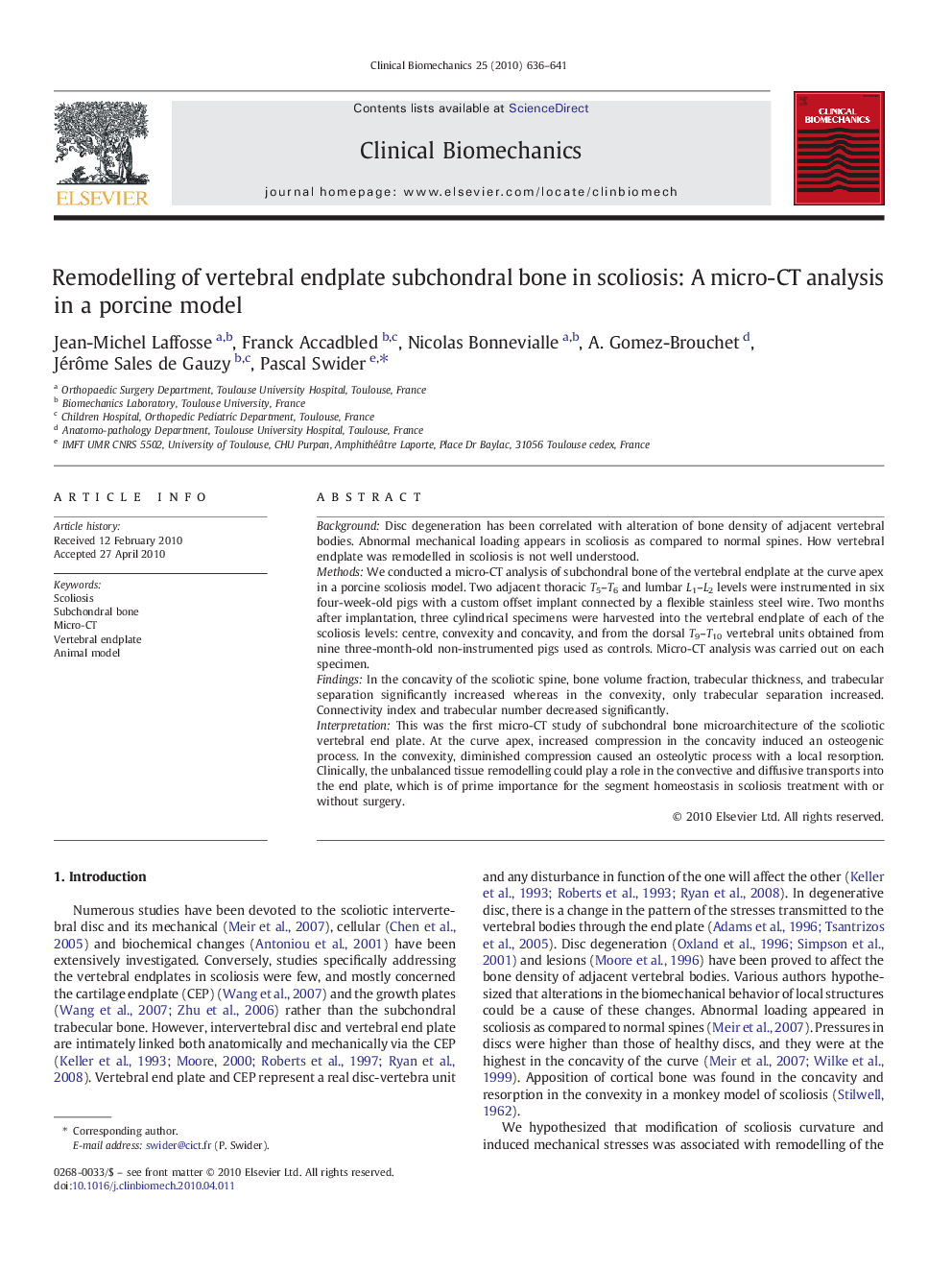| Article ID | Journal | Published Year | Pages | File Type |
|---|---|---|---|---|
| 4050937 | Clinical Biomechanics | 2010 | 6 Pages |
BackgroundDisc degeneration has been correlated with alteration of bone density of adjacent vertebral bodies. Abnormal mechanical loading appears in scoliosis as compared to normal spines. How vertebral endplate was remodelled in scoliosis is not well understood.MethodsWe conducted a micro-CT analysis of subchondral bone of the vertebral endplate at the curve apex in a porcine scoliosis model. Two adjacent thoracic T5–T6 and lumbar L1–L2 levels were instrumented in six four-week-old pigs with a custom offset implant connected by a flexible stainless steel wire. Two months after implantation, three cylindrical specimens were harvested into the vertebral endplate of each of the scoliosis levels: centre, convexity and concavity, and from the dorsal T9–T10 vertebral units obtained from nine three-month-old non-instrumented pigs used as controls. Micro-CT analysis was carried out on each specimen.FindingsIn the concavity of the scoliotic spine, bone volume fraction, trabecular thickness, and trabecular separation significantly increased whereas in the convexity, only trabecular separation increased. Connectivity index and trabecular number decreased significantly.InterpretationThis was the first micro-CT study of subchondral bone microarchitecture of the scoliotic vertebral end plate. At the curve apex, increased compression in the concavity induced an osteogenic process. In the convexity, diminished compression caused an osteolytic process with a local resorption. Clinically, the unbalanced tissue remodelling could play a role in the convective and diffusive transports into the end plate, which is of prime importance for the segment homeostasis in scoliosis treatment with or without surgery.
